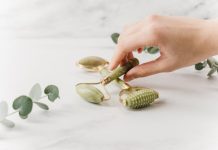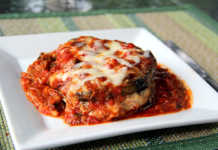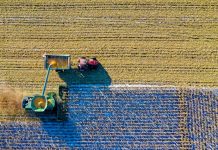Now, in part two, I take a look at what people had to do during the war when it came to the home, food, and other consumables. Food and coal were rationed and the quantities provided were relatively small and could barely stretch, so homemakers had to be creative.
Coupons for clothes and fabrics which I talked about in part 1 were different to coupons for food and they were not interchangeable. In fact, the whole coupon system was a little complicated. There is a little FAQ section (though it is labelled as a quiz.) I bet you thought that was a modern invention due to the Internet? So, as well as things being scarce, understanding what you were entitled to may have taken some patience.
Patriotic duty was one thing, but what was a houseproud woman to do during WWII when it came to cooking, cleaning, and having a presentable home?
House plants were popular, but you couldn’t use your ration cards to buy petunias even if petunias were available. I daresay people in the country didn’t have the problem, but city dwellers had a distinct lack of greenery purely for decoration. I’m not sure what bright spark first thought of it, a trip to a farm perhaps? But someone noticed that carrot tops were actually quite pretty. So that’s what some people did. They used carrot tops in pots to decorate the home. A small symbol of beauty in a time when there was little to be had.
Of course the actual carrots would have been used as food. If you had even the tiniest patch of soil in your garden it was no doubt used to grow vegetables. Or even better if you had room for chickens then you had some. Chickens produced eggs which could be eaten of course but also traded for other foods.
In fact chickens, and even rabbits were prized possessions during the war. There are stories of chickens being taken into the air raid shelters. People couldn’t risk their chickens being blown up and killed. I doubt there was much sentimentality involved, though I would like to think some of these chooks were given names and treated as part of the family. But they were such valuable commodities and hard to replace so people couldn’t afford to lose them. It must have made some long nights in those air raid shelters very interesting.
Rabbits and chickens could be killed for meat too, presumably once they no longer served any other purpose. Rabbit skin was valuable and could be sold to the rag and bone man for a bit of extra cash.
Housewives had to be very creative at meal times. Again they couldn’t simply go to the supermarket and buy what they needed. They were forced to use what they could get. It could be mushroom stalks and tins of spam. Sugar was very limited so many took to using the first form of artificial sweeteners in their coffee and tea. Sugar being too valuable to waste. Boiled sweets were a rare treat, usually saved for Sundays.
So putting a meal on the table for the family would probably not be considered a creative skill these days, unless you are Heston Blumenthal. But women during the war had to be creative each and every day. People still had to eat.
Not only did they have to eat but also cook as well as warm the home. Coal was heavily rationed so there were various tips on how to save fuel in all areas of the home. Mrs Arthur Webb, a cookery writer, advocated using a pressure cooker and recommended cooking meals in three tiered steamers so only one burner was used. If the oven was used then it was used to cook as many things as possible and would be turned off for the last part of cooking.
Hot water had to be rationed. Washing up was done in a basin rather than the sink. The hot water for this would be from a pot full that had been put in the oven after it had been turned off. Shallow baths were recommended. Leaflets gave instructions for lagging the hot water tank, and other meticulous instructions for using every last bit of coal.
One pamphlet was very serious and to the point titled “The Battle for fuel. Here are your Battle orders.”
So Make Do and Mend required a concerted effort by a lot of people in all aspects of life. Perhaps some women thought of certain things themselves. All those pamphlets were written by some people who either thought of the ideas themselves or asked around. People who had once simply been able to shop for clothes, fuel and food suddenly had to change their entire lifestyle and learn skills they might never had otherwise had to learn.
Who knows what those years of thrift, recycling and learning new skills did for people long after rationing ended? People would have had their thought processes permanently changed. Passing on this new way of thinking to the next generation perhaps? The idea that if you need something then you simply had to figure out a way to make it or make it happen.
So I would like to think that everyday creativity is in actual fact something we are all capable of. Even if we are living in different times perhaps the next time we require something we could think how we could go about getting it done that doesn’t involve simply going to the shop and purchasing something ready made? It would certainly make life more interesting!
Note: If you are interested in viewing the pamphlets and ration instructions then you can in the book “Make do and Mend. Keeping family and home afloat on war rations. Reproductions of official Second World War instruction leaflets.” With a forward by Jill Norman.

![5 Reasons You Should Travel Alone Airplane [image source: chau nguyen/ http://thedevilhatessweatpants.blogspot.com.au ], crowd ink, crowdink, crowdink.com, crowdink.com.au](https://crowdink.com/wp-content/uploads/2016/08/Chau-airplane-218x150.jpg)




























![5 Reasons You Should Travel Alone Airplane [image source: chau nguyen/ http://thedevilhatessweatpants.blogspot.com.au ], crowd ink, crowdink, crowdink.com, crowdink.com.au](https://crowdink.com/wp-content/uploads/2016/08/Chau-airplane-100x70.jpg)


